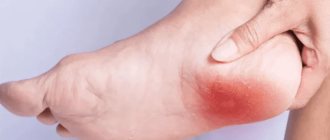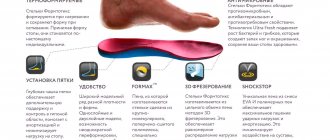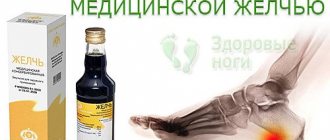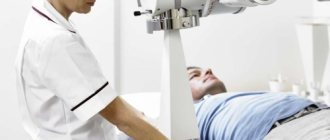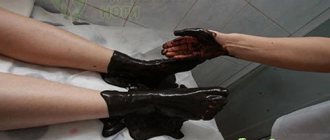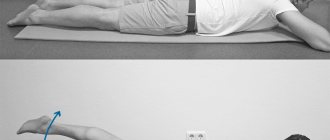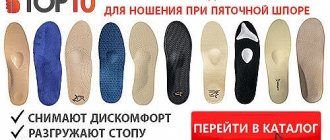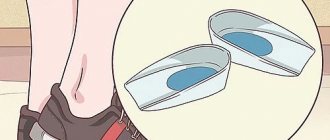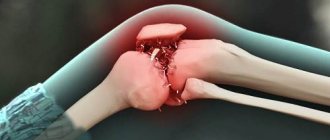Physiotherapy is part of the comprehensive treatment of plantar fasciitis, aimed at reducing inflammation and restoring motor function of the foot.
In modern medicine, laser treatment for heel spurs has gained great popularity in the last 10 years.
This method allows you not only to reduce pain, but also to completely get rid of the heel spike.
In some cases, crushing the heel spur with a laser helps to avoid painful and traumatic surgery.
Laser therapy for heel spurs
A medical laser is a device that emits a light beam that has certain characteristics: wavelength, power, radiation frequency, etc. When fascial tissue is exposed to laser radiation, metabolic processes are accelerated, as a result of which cells are regenerated and actively renewed.
Unlike shock wave therapy for heel spurs, low-frequency laser treatment does not break up the bone spine or salt deposits.
This type of physiotherapy produces the following therapeutic effect:
- stops the inflammatory process;
- stimulates cell regeneration;
- restores damaged nerve endings;
- reduces pain intensity;
- strengthens the heel fascia.
Laser therapy in combination with drug treatment in most cases gives a lasting positive result. The attending orthopedic doctor will tell you how to treat heel spurs with medication in order to maximize the effect of laser treatment.
If there is no dynamics, and this happens in 5-10% of cases, a specialist may prescribe surgical fragmentation of the heel spur with a laser, which is a complete replacement for surgical intervention.
Nuances of the course of the disease
A spur develops in the heel area due to inflammation that has arisen for various reasons. As a result, the ligament (plantar fascia) consisting of several tendon fibers undergoes a number of degenerative changes. The main function of this functional formation is the connection of the digital phalanges and the lower segment of the calcaneus. Thanks to its presence, the physiological position of the longitudinal arch of the base of the foot is maintained and flexion-extension occurs during movement.
At the very beginning of the formation of the spur, while ensuring long-term rest, self-healing of the tendon fibers occurs, but over time this ability is lost. With constant movement, microtraumas appear on the ligaments, which lead to deterioration of the fascia and slow down the process of regeneration of foot tissues. A heel spur gradually forms, which in official medicine is called “plantar fasciitis.”
How is heel spur treated with laser?
Laser therapy includes two courses:
Daily laser exposure to the heel area from 4 projections.
Light waves are applied to the affected heel with a frequency of 50-60 Hz and a power of approximately 80 mW. Low frequency radiation heats fascial tissue and triggers regeneration.
The laser also affects receptors, reducing their sensitivity, thereby reducing pain. Session duration is up to 30 minutes.
The number of procedures is at least 10. The second course of laser therapy begins no earlier than 2 weeks after the end of the first.
Exposure to laser with a frequency of 80-90 Hz and a power of 90-100 mW.
Number of procedures - 10, lasting up to 10 minutes. Exposure to a higher frequency laser stops the deposition of salts, and therefore prevents the growth of spurs.
Note! Laser therapy for heel spurs does not eliminate the growth and the causes of its appearance. To crush a bone spur with a laser, another course is used, which is called “surgical laser removal of a spur” with high-frequency exposure.
During the treatment period, it is recommended to follow everything that helps with heel spurs, including timely taking of prescribed medications, unloading the heel with the help of orthopedic heel pads and stretching the fascia with the help of Strutz insoles.
Surgical removal of heel spurs with laser
The procedure is carried out in a sterile room because before starting to remove the heel spur surgically using a laser, the doctor performs a perforation (puncture) in the center of the growth with a thick needle. A laser tube is inserted into this needle and the spur is destroyed from the inside.
This fragmentation of the heel spur is recommended if shockwave therapy and conventional laser therapy do not bring the desired effect. High-frequency laser pulses (600 Hz) destroy the bone-saline spine and cause minimal damage to surrounding tissues.
If the growth is too large, the procedure may need to be repeated. The effectiveness of crushing is assessed on days 2-3 by radiography of the fascia.
Indications for surgery
Surgical treatment of heel spurs is indicated in the following cases:
- discomfort in the foot area that persists for more than 8-12 months;
- complaints of pain of varying degrees of intensity;
- pronounced and progressive growth of exostosis, confirmed by x-ray;
- decreased physical activity;
- negative impact of the disease on professional activity and usual quality of life;
- insufficient effect of conservative measures.
The operation is contraindicated in childhood due to the fact that the musculoskeletal system is not fully formed in children, and the bones have not yet acquired the required physiological hardness.
Laser treatment of heel spurs: consolidation of the effect
Laser spur removal helps get rid of the growth, but, unfortunately, does not eliminate the causes of its appearance. Recurrence of fasciitis occurs in 10-20% of patients. As a rule, this is associated with flat feet, improper rehabilitation after crushing the spine, as well as exacerbation of concomitant diseases.
To consolidate the therapeutic effect and prevent recurrence of heel inflammation and the appearance of spurs, doctors recommend:
- do gymnastics to strengthen the fascia;
- use a Strasbourg sock during sleep to quickly heal microtraumas;
- wear comfortable shoes and be sure to use orthopedic insoles;
- treat your feet with Pyatkospor Prophylactic cream;
- load your legs gradually, avoiding excessive overload;
- consume less salt with food.
If you follow these recommendations and know how a heel spur is treated at the initial stage, then the re-growth of a spine can be easily avoided.
You can find out which insoles you need for heel spurs from your doctor. The best option for people at risk of developing fasciitis are “Concept-Antishock”, “Polza” insoles, etc.
Causes of spur formation
Among the factors that provoke the development of the disease, experts name the following:
- Orthopedic foot problems
Flat feet of any kind negatively affect the height of the arch, which is why the load is distributed unevenly. The patient experiences sprains and tendons rub against nearby connective tissue.
- Diseases of infectious origin
If a patient suffers from frequent colds or has chronic pathologies of the genitourinary system and skin, then in these cases there is a deterioration in the immune status. The process of self-healing of defective areas of connective tissue and tendon fibers slows down. Damaged fascia takes a long time to recover, and the affected area is steadily increasing.
- Traumatic foot injuries
Uncomfortable shoes that compress the foot for a long time, an unsuccessful landing after a jump, or bruises often cause the formation of microscopic tears in the ligament and the impetus for the formation of a focus of inflammation.
- Disturbance of metabolic processes in the body
If the endocrine system malfunctions, the water-salt balance is disrupted, the quality, speed of regeneration, and functionality of connective and bone tissues change. Risk factors are diabetes, gout, hypothyroidism, hyperprolactinemia and similar diseases.
- Gain kilograms quickly
Due to the increase in body weight, the load on the joints and tendons increases significantly. This leads to a decrease in the layer of fat on the fascia, which is intended to serve as protection and shock absorption. Micro-tears appear on the compressed tendon ligament, but self-healing is practically absent.
Laser removal of heel spurs: advantages and contraindications
Laser therapy has many benefits:
- Helps enhance the positive effects of anti-inflammatory drugs.
- Does not cause side effects.
- It is performed on an outpatient basis without hospitalization.
- The procedure is painless and does not cause discomfort.
- High efficiency, pain reduction after the first session.
- Replaces surgery.
Despite all the above advantages, a laser to get rid of fasciitis cannot be used for endocrine disorders, heart failure, oncology, or during pregnancy.
Symptoms
The main clinical sign of the disease is pain, which may not always appear, but only in 5% of cases. It should also be noted that symptoms are often caused not by the presence of a spur as such, but by changes in the soft tissues.
Clinical picture:
- Heel pain that gradually goes away with walking. It occurs when getting up after sleep or a long rest. It is localized either in one place or felt throughout the heel.
- Pain after physical activity.
- Feeling of a nail or pin in the heel.
- Pain when palpated.
- Swelling of the heel area.
- Restricted foot mobility.
- Presence of calluses.
Unpleasant sensations occur when adjacent tissues are injured and do not depend on the size of the spur. The nature of the pain may vary. At first it is acute, sudden; then it becomes chronic, gradually increasing and dull.
or sign up online
+7
call me back
Find out the price
Treatment of heel spurs with laser: reviews and prices
Among patients, laser treatment for heel spurs has mostly positive reviews. Doctors also highly appreciate the effectiveness of this physiotherapy.
One of the significant disadvantages that people point out in their reviews is the high cost of laser therapy. On average, the price of 1 procedure is 800-1200 rubles, which is quite expensive, considering that the full course includes 20-30 sessions. However, in many clinics laser therapy is performed absolutely free of charge, because it is included in the list of compulsory medical insurance procedures.
